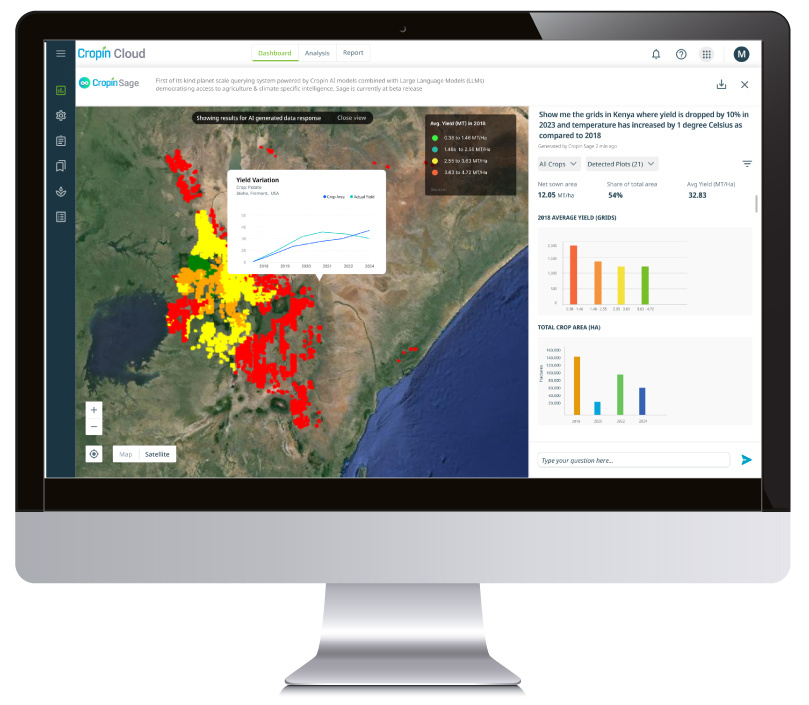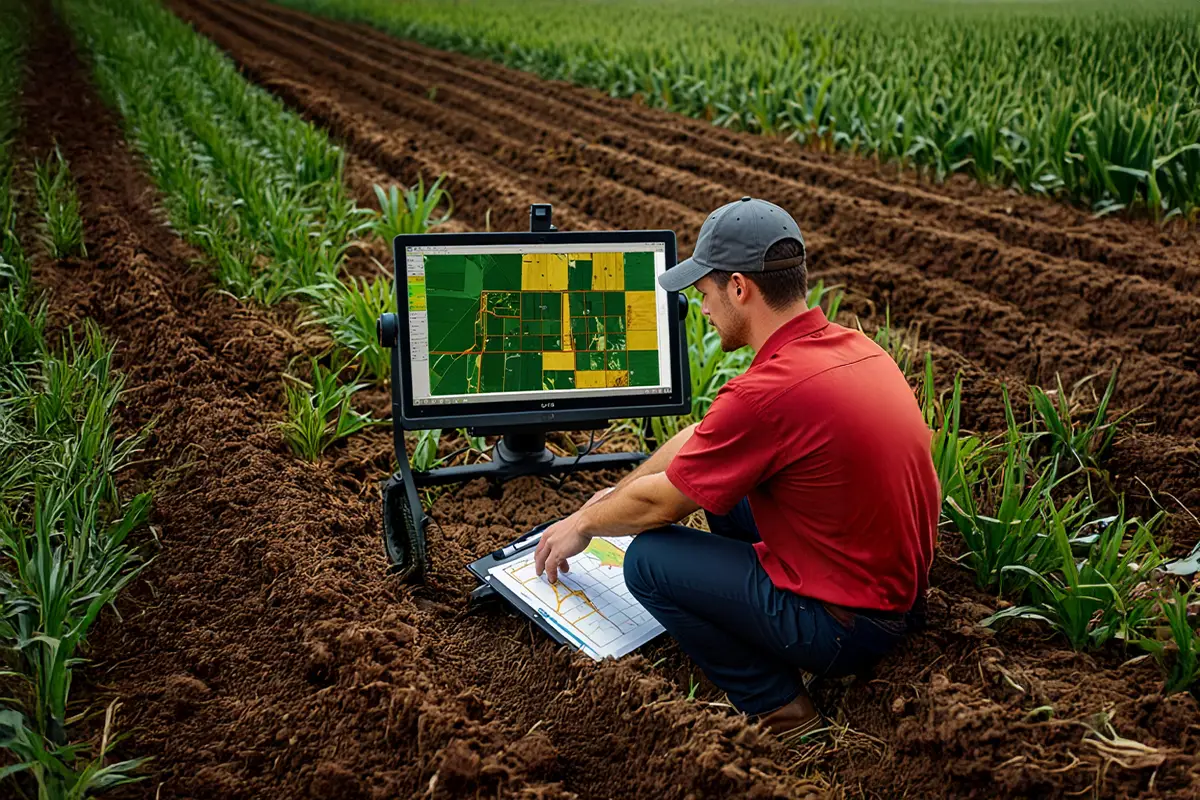Synopsis:
This blog explores how technology can be leveraged in the first step of cultivation – the selection of best land patches for seed production. We discuss how Agtech can streamline the process of site selection, contracting and monitoring of seed production. Cropin’s innovative approach empowers stakeholders with data-driven intelligence at both regional and granular level. Our unique combination of analytical AI and generative AI provides comprehensive intelligence ensuring informed decision-making throughout the seed production process.
A huge potential that seed companies could harvest
- Enhanced efficiencies in productivity
- Reduced costs & wastage
- Greater (and greener) agricultural output
Top challenges that act as a roadblock in the pre-sowing stage
Site selection:
Contracting:
How technology helps seed manufacturers in the pre-sowing stage
Enjoy the ease of remote site selection with Agtech:
Contracting simplified with technology:
Top challenges that act as a roadblock in the pre-sowing stage
Cropin: the Agtech innovator
Our unique approach:
-
Crop knowledge graph:
Leveraging our proprietary crop knowledge graphs build with 14 years of expertise across a vast database of 10,000 crop varieties, we pinpoint ideal cultivation regions. -
Contextualized AI models for analytics:
Our advanced AI/ML models processes satellite imagery, weather forecasts, open source datasets, historical data and more generating a Cultivation Potential Index for targeted areas. -
Comprehensive assesment:
This index evaluates land suitability, considering factors regional temperature, humidity, soil type, farmer profile, and water availability. -
Location mapping:
We identify optimal locations, considering water sources, soil quality, and potential hazards to ensure successful cultivation.
Crop suitability grid intelligence: a powerful tool for decision-making
Key features:
-
Multi-horizon insights:
We offer multi-horizon insights across the current season (with near real-time monitoring and in-season forecasting), future forecasting for upcoming season (insights on potential yields and market demands) and historical data. -
Crop map & Yield map:
Visualize acreage, historical yield trends, and seasonal variations for your chosen crop. -
Long-term weather normal:
Compare seasonal weather data with long-term averages to understand weather patterns and their impact on crop performance. -
Crop potential score:
Assess each grid’s spatial productivity based on factors like weather, soil conditions, and elevation. -
Disease pressure map:
Identify areas with high risk for specific crop diseases.
-
Gain a competitive edge:
Leverage data-driven insights cost effectively for informed decision-making. -
Diversify your portfolio:
Identify new opportunities in emerging markets. -
Build sustainable supply chains:
Partner with regional farmers for ethically sourced produce. -
Optimize resource allocation:
Ensure efficient use of water, land, and other resources. -
Disease pressure map:
Identify areas with high risk for specific crop diseases.

Cropin’s intelligent agriculture cloud helps seed producers:
- Manage global seed operations on a single platform
- Manage multi geography and multi variety configurable workflow for localization required
- Speed up innovation for research and development, trails, traits, etc
- Manage multigenerational traceability of seed
- Engage your growers and agronomist with data and insight to improve the quality and yield
- Build and organize unstructured data sets into structured data assets for insights and speed to market new variants/varieties
- Bring developers to interact with data and extend, embed AI/Ml and integrate on its Intelligent Agriculture Cloud
Solutions provided by Cropin, bring significant benefits to seed corporations, culminating in the best per-hectare yields and an improved bottom line. Post pre-sowing stage Cropin offers further assistance on the right quantum of fertilizer, water, pesticides, etc., required for seed and field preparation before sowing. Agtech also helps to take the guesswork out of sowing, something you can learn more about in our next blog.








